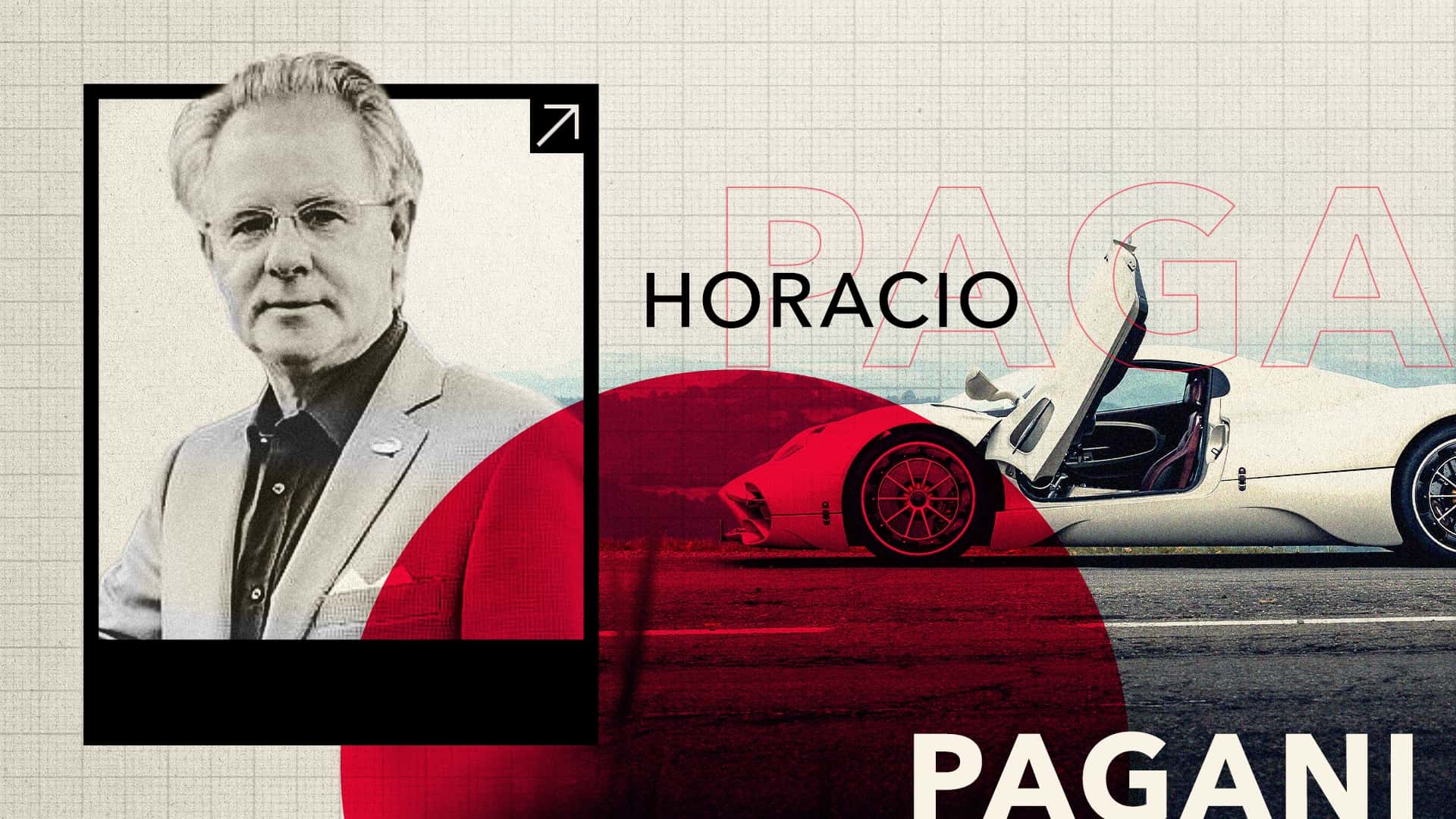
Horacio Pagani has much to be proud of. As a young man, he moved from Argentina to Italy, then built a kingdom from carbon fiber. Along his journey, Pagani probed new territory in composites manufacturing, set the high watermark for low-volume car building, and helped invent the hypercar.
Pagani followed up the peerless Zonda with a pair of handbuilt masterpieces, the Huayra and Utopia. More than 25 years on from his first landmark hypercar, as we sit down for an interview in a beautifully appointed suite overlooking Monza’s front straight—where the all-new Huayra R Evo Roadster howls by at more than 190 miles per hour—you couldn’t blame Signore Pagani for stretching out on an easy chair and leaning into his legacy.
But after covering those early landmarks in a rare one-on-one interview, Horacio Pagani locked in, never more eager to speak than when he’s dreaming of the future to come. The future of Pagani is wide open, perhaps more full of possibilities than ever.
As with our recent interview with Alois Ruf, our talk with Pagani proved wide-ranging. From his laser focus on building community between the owners of his cars—a process he’s deeply involved in—to the sheetmetal that’s yet to come, we covered a lot of ground.

But if there’s one thing that’s always kept me personally passionate about Pagani cars, it’s an excitement about what Horacio Pagani will think of next.
What follows is a Q&A between Horacio Pagani and Motor1 contributor Kyle Kinard. The interview was translated from Italian to English, then edited for clarity, organization, and continuity.
Kyle Kinard, Motor1: We’re here at Monza to check out Arte In Pista, basically a series of track days for Huayra R customers, and now Huayra R Evo Roadster customers. As great as the road cars are, do you get a special satisfaction building track-only Paganis?
Horacio Pagani, Pagani Automobili: For me, it's easier to work on track cars because I can design and imagine them more freely, let's say, to satisfy that desire for freedom, right? The whole point of Huayra R is that road cars have a lot of strange complications due to homologation, very complicated components. Whereas track cars… it’s kind of a fun game. With road cars, it’s much more difficult.
Motor1: It’s also different in this case, because you’re designing a car for the track, but not for racing. What are some of the nuances of these cars that illustrate the difference?
Pagani: The REVO [Pagani’s nickname for the Huayra R Evo and R Evo Roadster] is a car that matches the lap time of racing prototypes. It is, in a certain way, a race car. Quite fast.
But if you look at the REVO Roadster, it has a simpler underbody and cutouts in the roof. It says that our customers are here to really have a good time at Arte In Pista; they don't want to compete against each other.
So we needed to offer a car that allowed drivers to make slight mistakes in that sense, without heavy risks, and without grave consequences for mistakes.
Compared to a race car, where you try to extract 100 percent of the speed, here we try to extract 100 percent safety, 100 percent emotion. Then there’s the sound [of the REVO Roadster’s naturally aspirated, 900-horse V-12], of course. We try to look for balance. That's the mission.

'I'm 69 years old and I am still enormously curious to learn something new every day, which is the energy and the light like a candle that gives me.'
Motor1: Speaking of balance, how is the road car business working right now? In what ways do you see Pagani changing in the future, or is it a matter of maintaining course?
Pagani: I’d like the company to keep on the same path it’s been on since it was born. We really try to have limited hypercar production; in the history of Pagani, we’ve produced fewer than 600 cars.
So you see, the numbers are very, very limited. We really try to make tailored suits for our customers. The dreams of our customers need to be represented in the car. So that's what we really want to do.
Motor1: But you’ve also got your finger in many pies, so to speak. There’s a manufacturing wing to Pagani, and there’s composites work for the aviation, defense, and private sectors. It’s not just about building hypercars. Does that need to keep expanding?
Pagani: For a company to be sustainable, it's all about investing in the future, investing in technology. So, of course, Modena Design [Pagani’s sister company, started by Horacio, sold, then brought in-house recently] was known for the composite materials research in the 1980s.
Today, Pagani has evolved into a company that not only specializes in composite materials; Now we have the vertical know-how and the workforce internally, for example, to design and build the suspension and the steering wheel on the Pagani Utopia. The differential of the car was developed by the guys internally at Pagani.
In the past, we didn't possess that capability. Now it’s all about the formation of the workforce, about developing the skills of these people. We have 15 designers working in the design studio of Pagani, where I try to teach my experience to a new generation of designers. The result is that we differentiate in other fields like aviation or biomedical, because these young designers are very hungry to express their creativity.

'For a company to be sustainable, it's all about investing in the future, investing in technology.'
Motor1: Right. So by vertically integrating the manufacturing and the engineers, designers, and the like, you naturally have the ability to branch out and sell that expertise?
Pagani: Certo.
Motor1: But there’s still some uncertainty when it comes to legislation, tariffs, and the like. Does that uncertainty make you nervous? Or is it just standard for a boutique automaker, part of the job of building hypercars?
Pagani: I would say small automakers are more confused than nervous. As with the proposed combustion engine ban for 2035, in my opinion, it’s much more political than actually sustainable.
It’s not that companies like Mercedes-Benz, Ferrari, BMW, and Toyota don’t have the know-how; They can make it happen. They have the resources. But what’s very confusing is that they have to work on different paths, like say, a hybrid car, full electric, or hydrogen.
At the end, each company does a great job, they achieve a certain project, but the customer is never going to pay for them. So the companies don't get rewarded for the investment and the work behind it. The product goes against customer desires.
So it's very confusing that in one minute everything changes and you have to start again.
You must understand what direction to work, whatever you produce in the world. You need to be able to plan, somehow, to make sure that the direction you're taking is correct.

Motor1: And from the three or four times I’ve visited Pagani, it always seems like there’s a direction. You have all that capability under one roof and keep expanding it. That must be exhilarating as an engineer, even with political and regulatory challenges.
What excites you about the future?
Pagani: I'm 69 years old and I am still enormously curious to learn something new every day, which is the energy and the light like a candle that gives me.
At my age, after working this much, something I still really love is the automobile. I’m still so passionate about the automobile. Of course, Pagani cars are my job, but all other cars mean something to me. I’m very emotional when I buy a new car, for example.
I want to keep studying the life of Leonardo da Vinci. So now, when I’m in Milan, I have a big collection of books where I study the life of Leonardo. That's what fuels me. And of course, working with people of different ages, younger people, it's something very stimulating and emotional.







